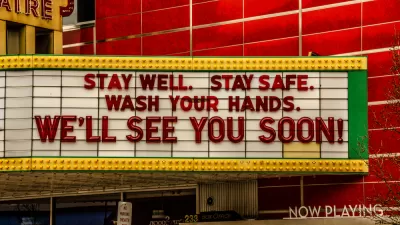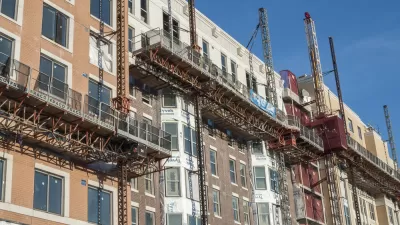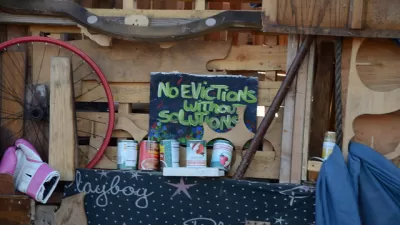Court records on eviction filings vary widely and don’t include the outcome and miss informal actions. Without this data, officials don't have a clear picture of displacement of low-income renters and its effect on housing stability.

This article was is republished from Stateline under a Creative Commons license. Read the original article.
Evictions are a window into America’s rental housing crisis: In 2022, more than half of all renters spent over a third of their income on housing, and millions of tenants who miss rent payments are evicted each year.
When renters are kicked out of their homes, the consequences can be disastrous. Families might lose their possessions when they are piled on the sidewalk, or can’t afford the fee to get them out of storage. Children might have to switch schools, and studies show that evictions often lead to job loss and depression.
The most recent eviction data, based on court records, suggests that 3.6 million evictions were filed in 2018, or 7.8 for every 100 renter households. Those numbers, from the Eviction Lab at Princeton University, are considered to be the best available. But they don’t come close to painting a full picture.
Court records on eviction filings vary from county to county, and typically don’t contain much information beyond names and addresses. Crucially, they usually don’t detail the eventual outcome of the legal proceedings. And legal records only represent evictions that make it to court, not informal ones that occur outside the legal process, such as when a property owner simply changes the locks.
“There’s virtually nothing on anything that might happen outside of the court system, like more informal evictions where it’s maybe just a threat, and the person moves out,” said Jill Naamane, a director at the U.S. Government Accountability Office and the lead author of a recent report on the limits of eviction data.
“Evictions are called something different in lots of different places. There are writs of this and complaints of that, and even after understanding all those different nuances in the thousands of places, you still may not really have a good data set.”
Researchers and housing advocates say policymakers need better eviction information to make meaningful progress in addressing the nation’s affordable housing crisis. Many of them are calling on the federal government to collect and standardize the disparate data, and to provide demographic details on the tenants and property owners involved in evictions.
Collecting data
The U.S. Department of Housing and Urban Development collects data on tenants who leave public housing, but it does not gather information on people who are evicted from private housing. In 2020, Congress directed the agency to study the feasibility of creating an evictions database, but four years later, it doesn’t exist.
There’s virtually nothing on anything that might happen outside of the court system, like more informal evictions where it’s maybe just a threat, and the person moves out. – Jill Naamane, a director at the U.S. Government Accountability Office
In the absence of a federal database, the Eviction Lab has become one of the primary sources of eviction information. But the group relies on court filings, and despite aggregating more than 99 million eviction records and 30,000 county reports on eviction filings between 2000 and 2018, it does not have reliable data for the counties that include a third of renters.
“In one county, they use one software and track it digitally, and literally the neighboring county could be something completely different,” said Camila Vallejo, a researcher at the Eviction Lab. “It makes it really hard to funnel that data outwards if all the courts aren’t [using] the same resources or instructions.”
Property owners typically seek to evict tenants for nonpayment of rent or other violations of lease agreements. Owners begin eviction proceedings by notifying the tenant, then filing a lawsuit in a local court.
Court filings allow researchers to determine how often property owners begin this process, but they can be a poor measurement of actual evictions.
For example, the filings don’t always indicate whether the court has ruled in favor of the landlord and ordered the tenants to leave. A tenant might leave voluntarily after getting an eviction notice, or the property owner might drop the filing after reaching a payment agreement with the tenant. Even after an eviction judgment, a landlord might allow a tenant to remain if certain conditions are met.
Property owners also might pursue an informal eviction outside the court system, by changing entry-door locks or shutting off utilities.
Carl Gershenson, the director of the Eviction Lab, said the group is working on ways to fill in some of those gaps.
“A lot of this involves linking the eviction records to other sources of address data,” Gershenson said. “We’re close to getting a good estimate of how many people are ultimately displaced upon receiving these filings.”
Advances in artificial intelligence might aid such efforts, according to Tim Thomas, director of the Urban Displacement Project at the University of Toronto and the University of California, Berkeley.
Thomas noted that even the limited eviction data that is available now has had a profound impact on policy. For example, he said, it helped prompt the federal Centers for Disease Control and Prevention to issue a moratorium on evictions during the pandemic. That cut eviction filings by more than half in 31 cities tracked by the Eviction Lab.
“The pandemic put gasoline on the fire,” said Thomas. “The data we had prior to the pandemic helped inspire the CDC moratorium. Without that data, we wouldn’t have had as strong of a response.”
Who is most affected
Recent studies on the demographics of the people evicted also have had an effect on policy, advocates say. Multiple studies and reports show that Black women, infants and young children are disproportionately affected by evictions.
Such research has helped spur state legislation to guarantee tenants’ right to counsel in eviction proceedings. The National Coalition for a Civil Right to Counsel estimates that 83% of landlords have a lawyer in eviction proceedings, compared with 4% of tenants. It also has sparked so-called just cause laws that limit the reasons a landlord can evict a tenant or refuse to renew a lease.
Colorado Democratic state Rep. Javier Mabrey, an eviction lawyer who sponsored a just cause measure that Democratic Gov. Jared Polis signed into law in April, said he was inspired by personal experience: When he was 15, a landlord evicted him, his brother and his permanently disabled mother, leaving them homeless.
He told Stateline that bringing House Speaker Julie McCluskie, a fellow Democrat, to see eviction court helped earn her support after she voted against the measure last year.
“This year, after coming to eviction court with me, it was one of the bills that she highlighted” in her speech opening the legislative session, Mabrey said. “When you peel back the curtain on the eviction process, it highlights the need for these protections for tenants.”
Robbie Sequeira is a staff writer covering housing and social services for Stateline.

Study: Maui’s Plan to Convert Vacation Rentals to Long-Term Housing Could Cause Nearly $1 Billion Economic Loss
The plan would reduce visitor accommodation by 25,% resulting in 1,900 jobs lost.

Alabama: Trump Terminates Settlements for Black Communities Harmed By Raw Sewage
Trump deemed the landmark civil rights agreement “illegal DEI and environmental justice policy.”

North Texas Transit Leaders Tout Benefits of TOD for Growing Region
At a summit focused on transit-oriented development, policymakers discussed how North Texas’ expanded light rail system can serve as a tool for economic growth.

Paris Bike Boom Leads to Steep Drop in Air Pollution
The French city’s air quality has improved dramatically in the past 20 years, coinciding with a growth in cycling.

Why Housing Costs More to Build in California Than in Texas
Hard costs like labor and materials combined with ‘soft’ costs such as permitting make building in the San Francisco Bay Area almost three times as costly as in Texas cities.

San Diego County Sees a Rise in Urban Coyotes
San Diego County experiences a rise in urban coyotes, as sightings become prevalent throughout its urban neighbourhoods and surrounding areas.
Urban Design for Planners 1: Software Tools
This six-course series explores essential urban design concepts using open source software and equips planners with the tools they need to participate fully in the urban design process.
Planning for Universal Design
Learn the tools for implementing Universal Design in planning regulations.
Smith Gee Studio
Alamo Area Metropolitan Planning Organization
City of Santa Clarita
Institute for Housing and Urban Development Studies (IHS)
City of Grandview
Harvard GSD Executive Education
Toledo-Lucas County Plan Commissions
Salt Lake City
NYU Wagner Graduate School of Public Service





























